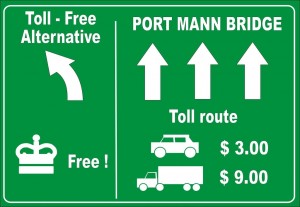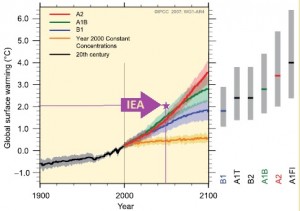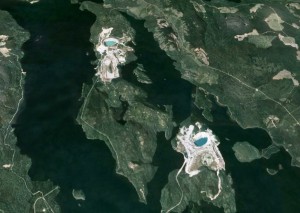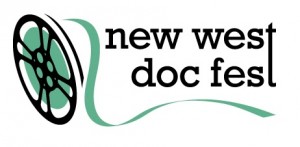Twitter is a world of strange interactions and misplaced meanings, often a result of over-ambitious editing to hit the 140-character limit. Inevitably, meanings and feelings are sometimes misconstrued. So I let the occasional personal insult slide off my back- the price you pay for being in the fray. I get called everything from a fascist / nazi to a commie / pinko, and have been counted among the “New West undesirables”. I get called an idiot (which is not far from the truth) and a know-it-all (which underestimates my brilliance, IMHO). Often, like in that last bracketed clause, it is the result of my lame attempt at sarcastic humour.
Very occasionally (and I only remember doing this twice in 7000+ Twitter exchanges) I have to react and call the person out for launching a personal attack. Interesting that both occasions were people calling me a misogynist for suggesting Christy Clark is not very smart, and may not be fit for the job of Premier of the Province.
“Misogynist” is one of those poorly defined insults that is really hard to react to. Partly because misogyny is common in our society in various forms, but except for a few obvious examples (I’m looking at you, Vatican) it is often subtle and difficult to define. I also recognize that, like racism, misogyny can be personal or can be so culturally/institutionally entrenched in a society that it is almost invisible while being omnipresent. (Kids in the Hall skit: Cop 1 “You ever hear anything about sexism on the force?” Cop 2: “No. I haven’t heard any of the guys mention it.”)
As a bonus, a middle-class white male like me trying to defend against the charge runs the risk of sounding like that person who says “I’m not racist! I know lots of black people!” If you are looking for a better informed and surprisingly nuanced discussion of misogyny, I suggest you spend some time hanging around over on Jarrah Hodge’s Blog. She is a New Westminster- based writer and academic, and provides accessible insight for those of us who don’t commonly think about these things in our everyday lives.
That said, a working definition of misogyny is the dislike, distrust or hatred of women. This can often be expanded into the objectification of women, but I sense that objectification is a result of one of the first three- it is just one recognizable symptom of the attitude, not an attitude in itself. What is not misogyny is dislike, distrust, or hatred of any single woman (unless, of course, you have these feelings because she is a woman, but again, this is more a manifestation of the bigger attitude).
There are people in this world I dislike and distrust. When struggling to think of an example of someone I “hate”, I get stuck on Dick Cheney, but really, I don’t have a lot of time for hate in my life. There is no-one, I can confidently say, that I dislike, distrust, or hate, because of their gender or ethnicity. I try very hard to judge people on their character and ideas, even when (especially when?) I disagree with their ideas. Through trying to understand opposing viewpoints, though thoughtful debate of ideas, is how I learn about the world. Dishonesty in thought or action usually earns my distrust, intellectual laziness usually earns my dislike. Overseeing the wholesale slaughter of 200,000+ innocent people for political ideology and greed and feeling no compunction about it after, as Mr. Cheney did, earns him a little of my scarce hatred.
My dislike (not hatred) of Christy Clark is not about her gender, it is about her lack of thoughtful ideas, her failure to lead, and what appears to be a stunning lack of self-awareness. She may not be a bad person, but she is a bad Premier. In some sense, she is indistinguishable from Bill Vander Zalm – a shilling salesman of simple ideologies with no cogent ideas, nuance in thought, or understanding of complex systems.
A couple of years ago, when she was nominated, I was uncertain what it meant, because I was uncertain who Christy Clark was (relative to, for example, Kevin Falcon or Darth Coleman). I didn’t listen to her Radio Show, and was not dazzled by her leadership run. I really disliked some of the decisions made by Kevin Falcon, so I admit to having some early hope that she would come out of the gate and put her stamp on the Province and differentiate herself from the person she defeated for the Leadership of the Liberals. Maybe she would arrive with a few good ideas to set a practical course for the Province, even stem the tide of shitty news arriving from Ottawa. Alas, over time, she has repeatedly failed to fulfill that early hope.
Actually, I have the same concerns about Justin Trudeau right now. Much like Christy Clark, he is telegenic, and sure seems to speak well to a room of supporters. People who like Justin Trudeau seem to really like him. They say “he is an inspiring speaker- and makes you want to follow him”. I just can’t shake the impression, reinforced whenever I hear him discuss any substantive issue, that he is a lightweight. He has neither the intelligence of Mark Garneau nor Martha Hall Findlay. I suspect Trudeau possesses neither the gravitas to lead our nation on the world stage, nor the intelligence to effectively manage a complicated multi-billion dollar enterprise like our Government. Stephen Harper (as much as I dislike the guy) clearly has both, as does Elizabeth May (not that she will ever have the opportunity) – and it has nothing to do with their gender.
The accusation of my misogyny came after I made a joke on Twitter about the Premier’s education history. But first we need to set up the context. The Premier was making one of those inspirational speeches to the already-converted when she kind-of compared herself to Margaret Thatcher, then turned that inspiration into an apropos-of-nothing and ridiculous criticism ofthe NDP in a demonstration of contrast. I quote (you can hear it yourself by going to the April 9 Episode here and starting at 1:33:00):
[on the topic of Margaret Thatcher] “She was a woman who endured the most withering kinds of criticism any woman – anyone in politics in the last 50 years – has endured, but she never, ever wavered. She stuck to her guns every single day. She pulled that country back from the brink, I would argue, by sheer force of will.
Everyone around the world knew what Margaret Thatcher stood for.
Contrast that with the guys were runnin’ against in this election. My opponent was in Prince George, Thursday last week. He was speaking to the Forest Industry, and in his speech he said ‘ya know, forest industry, I think you guys are entitled to reasonable profits’. (chuckle) And I thought to myself when I heard that: ‘what does that mean exactly?’ What’s a ‘reasonable profit’? And who decides what a reasonable profit is? Is it the Government who gets to decide what profit is reasonable for you? And if the Government is deciding what’s a reasonable profit for you, how long until they are deciding what a reasonable paycheque is for you to take home to your family?”
I’ll skip whether there is an implied self-comparison to Margaret Thatcher for now, the point was how the Premier parlayed that into a woefully unintelligent attack on the “guys [she’s] runnin’ against”.
You see, in British Columbia, the forests are Crown land. They are a public resource that belongs to the citizens of BC, just like water, natural gas, and minerals in the ground. When a company makes its profit by extracting and selling a resource that belongs to the citizens of BC, it is specifically the job of Government to determine how much of the profit made from that extraction and sale goes to the Company, and how much goes into public coffers to compensate the citizens of BC for the use of that finite publicly-owned resource. If the company profit is too low, we will not have enough companies deciding to come extract resources here, and the industry (and revenues and jobs, etc.) will suffer. If the profit is too high, then the citizens of BC are not receiving adequate compensation for their finite resource, (revenues suffer without a consummate increase in jobs, future supply is unnecessarily eroded). Where to find that middle ground? “Reasonable Profit” sounds about right to me.
As for the Government deciding what a “reasonable paycheque” is- does the Premier remember that it was she who raised minimum wage in the Province. Yes, the Premier herself, representing the Government, decided what a “reasonable paycheque” is for the lowest wage earners. Don’t get me started on Net-zero mandates for civil service paycheques.
Now, the joke string on Twitter began when someone other than me suggested that perhaps the Premier had to go back to civics class to understand the role of government, or at least first year Political Science. I then suggested that maybe this was taught in third year university, because we all know she didn’t get that far.
Har dee har har. It’s 140 characters, what do you want? A Heller novel?
It may not have been that funny a joke, but it sure as hell was NOT a misogynist joke. If she was somehow prevented access to University due to her gender, you might have a case; but she apparently had no trouble getting into three Universities, two of them of the expensive European variety, she just couldn’t pass enough courses to earn a degree.
Now, I’m not saying misogyny doesn’t exist, or that Premier Clark is not the recipient of some criticism that is clearly rooted in misogyny. Just go over to Alex Tsakumis’ blog (but turn off your speakers before you go there- yes- he has auto-start music on his homepage!) and see the language he uses to describe the Premier (and worse, that in the comments strings). I don’t think he hates her because she is a woman – so in his defense the out-of-scale hatred may not be rooted in misogyny- but the language and attitude he uses to criticize her is dripping with a twisted, sexist, misogynistic attitude that turns most thinking people off (and, based on his presence in the media, turns many others on!). This is that fuzzy grey zone of entrenched misogyny that makes self-assessment so difficult- it may not be intentional, and Tsakumis may be blissfully unaware of it, being a white guy like me who never had to deal with misogyny in his own life. Like the old saw about pornography- you might not be able to strictly define misogyny, but you know it when you see it.
When I go back through all of my writings on this blog that reference the Premier (easy to do, go up to the top left corner and enter “Premier” or Clark” into the search engine), I cannot find anything that my middle-class white dude brain would characterize as misogynist. Admittedly, I may be blind to it, but I would love if someone pointed it out to me.
Just as I was not being misandrous when I called Stephen Harper a “Dick” for the way he threw Helena Guergis under the bus at the most politically opportune time (I was instead being profanely critical of a single person’s personality faults). When I call Christy Clark “Premier McSparklestm” I am poking fun at what I perceive to be a carefully cultured but cardboard persona that combines “folksy” charm with the sheen of a well-oiled used car salesperson.
That may be an affect, and effective when shuckin’ to a room of the converted, or when makin’ deals with them folks over in Asia that need our energy and bring us jobs that really, really, you know, support hardworking BC families.
But I want something other than a vicious sales job when I choose a Premier of the Province. I want to see honesty, an ability to understand and relate complex problems, not bullshit simple solutions, an understanding that the entire world actually exists in that big fat grey zone between “Socialists” and “Free Enterprise”, not in some epic battle between them.
I want someone smart. And Christy Clark isn’t that.





